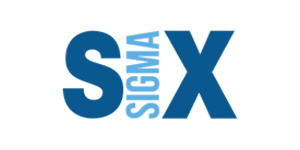The Lean Framework is flexible. There’s, indeed, a lot of freedom within framework.
A fence keeps us safe from harm – often, from harming ourselves and from harming others. In deployments of Lean Thinking at organizations, the principle of Freedom within Framework describes our approach well. Hoshin Kanri is another.
The A3 Report is an example of a framework. In it, there’s actually a lot of freedom. But, the key pieces of the A3 shouldn’t be ignored, the most important of which is the coaching that happens with A3 as the point of departure.
Disambiguating the Fence
A fence can be understood a few different ways:
- A Silo: A fence marks “mine” from “yours”. This is NOT what we are talking about.
- Privacy: A fence visibly prevents “outsiders” from seeing what is inside the fence. This is NOT what we are talking about.
- Protection: A fence protects us from harming ourselves and from potentially from harming others. In an organizational setting, this means that a Framework can prevent us from harming the organization and from causing undue costs, chaos, or future rework to the organization.
Freedom
When deploying Lean Thinking in an organization, it is important to abide by the principle of Freedom within Framework. This is important because human beings are sometimes threatened by “new” business approaches or philosophies and, when resistance sets in, it is a hole that is very difficult to climb from.
preserving human free agency is the core message
We must constantly remind the organization that free agency will not be trampled on.
A Framework
Yet, we must work within a framework, so that we collectively speak the same language, understand business challenges and opportunities with approximately the same worldview, and approach them according to company values.
So, the analogy of the Fence works here.
A Framework can prevent several things from going wrong:
- A Framework can prevent the use of many and incompatible software languages
- A Framework can prevent tarnish to a brand during international expansion
- A Framework can reinforce brand consistency and customer expectations
- A Framework can ensure the use of the same methods and the application of the same principles to business problems and opportunities.
Freedom Within Framework: An Example
McDonald’s Corporation is a worldwide brand. To expand internationally and still have fidelity to the brand image, processes, and customer expectations, they follow the principle of Freedom within Framework:
It’s good to get back to the basics of the business, to do the basics right. At McDonald’s that means “freedom within a framework,” We offer franchises flexibility in marketing, in the community, [and] in deciding compensation. But the McDonald’s framework is consistent. The brand is the same around the world.
Back to Lean Thinking: Different Flavors, Same Principles
The familiar Plan-Do-Check-Act in Lean Thinking has evolved into a number of like-acronyms:
- Observe-Orient-Decide-Act (OODA): This is practiced primarily by the Military.
- Define-Measure-Analyze-Improve-Control (DMAIC): This is the standard phases in Six Sigma, heavily influenced by Deming and PDCA.
- Ideas-Build-Code-Measure-Data-Learn (IBCMDL): This is taken from the Lean Startup movement, where Lean principles are applied to the business startup environment. This is a customization of PDCA for startup companies and software.
As you can see above, the different permutations of the basic PDCA model from Lean has been changes and customized to suit the needs of the company or situation. Hence, Freedom within Framework.
preserving human free agency and flexibility and fidelity to a core set of organizationally-understood and followed principles and methods is a core message









This kind of reminds me of the operating model concept from Enterprise Architecture as Strategy / IT Savvy?
Think 2×2 matrix, high and low for business process standardisation and data integration. Depending on the context, an organisation may target lower or higher standardisation or lower or higher integration. There is no universal target.